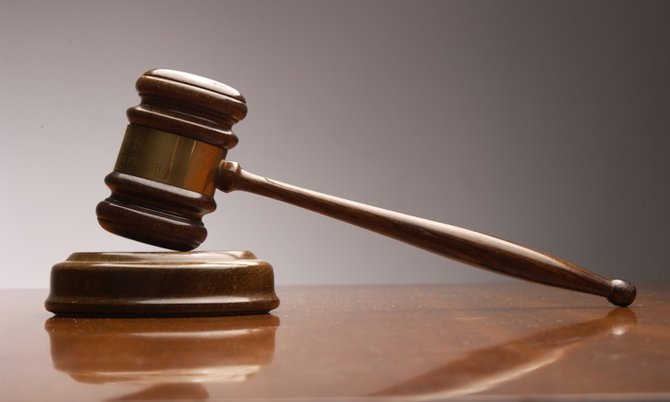By NICO SCAVELLA
Tribune Staff Reporter
nscavella@tribunemedia.net
A one-year-old girl who was allegedly set on fire by her schizophrenic mother had close to 50 percent of her body burned in the process, a forensic pathologist said yesterday.
Dr Kiko Bridgewater said Philicia Marshall suffered second and third degree burns on 43 percent of her body due to “non-accidental injury”.
Dr Bridgewater said the little girl suffered burns on her chin, chest, abdomen, the front and back of her lower limbs and the back of her right forearm. He said by the time her body got to him, he could see where doctors grafted skin off her back and buttocks in a bid to treat her.
But despite that, Dr Bridgewater said Philicia didn’t actually die from the burn injuries, but from an “overwhelming” bacterial infection —klebsiella pneumoniae sepsis—that when tested, was extremely resistant to multiple antibiotics.
That infection, Dr Bridgewater mused, likely set in during her hospitalisation at Princess Margaret Hospital (PMH). The lack of an epidermis, or the protective outer layer of skin, made it easier for the toddler to get infected in such an open environment.
Dr Bridgewater also said Philicia had also contracted bilateral pulmonary consolidation, or lung pneumonia, where the lungs become swollen or hard.
He said though it wasn’t out of the realm of possibility for Philicia to have survived, the odds were against her, given the percentage of her body surface area that was burnt and her age. And he said the bacterial infection would have still been difficult to treat, even if it was caught early on.
The testimony was given moments prior to the close of the Crown’s case against Marshall over allegations she caused her daughter’s death by means of unlawful harm.
Prosecutors allege the 41-year-old doused her child with gasoline and set her alight in December 2017 at her Faith Gardens home after “hearing voices”. The child died in February 2018 after being cared for at the Children’s Ward at PMH.
Also taking the witness stand yesterday was Dr William Seymour Jr, the Emergency Room resident who dealt with Philicia when she was first admitted to Accident & Emergency on December 28, 2017.
Dr Seymour said at the time, he estimated that Philicia suffered burns on 37 percent of her body; 6.5 percent on her anterior torso, 2.5 percent on the front and back of her legs; and another 2.5 percent on her right hand and forearm.
Dr Seymour said the burn pattern suggested that the toddler was lying on her back at the time she was set afire, as her back was not affected. He said the reason why she suffered burns on the back of her legs was likely because as a toddler, she had her legs elevated.
Dr Seymour said he viewed the injuries as “serious”, and the kind that required “aggressive” medical treatment. Otherwise, he said the toddler risked various complications, dehydration and improper healing.
As a result, he said he recommended she be admitted to PMH for pain control, hydration and burn treatment. He said his recommendations were carried out to the best of his knowledge.
Dr Seymour noted that during his initial examination of Philicia, which included blood work, he detected no signs or suggestions of an infection. However, he agreed that she may have picked up an infection while at the hospital.
However, Dr Seymour said although Philicia had suffered such serious injuries, he did not expect for the child to die. He said that was based on a “prediction” he arrived at using the Baux score, which he said is a universally accepted system used to determine the chance of mortality due to burns.
In order to determine a Baux score, Dr Seymour said the victim’s age and the total body surface area that was burned would be added. Based on his evidence, the higher the score, the higher the chance of mortality.
In Philicia’s case, he said her Baux score was “very low”, and less than five per cent. However, he noted that even with the Baux score he still could not say with certainty that she would not die.
Nonetheless, Dr Seymour said barring all causes of complications, he believed that with aggressive medical intervention, Philicia could have lived. However, he disagreed with suggestions that an aggressive medical treatment was not rendered.
The trial continues.




Commenting has been disabled for this item.